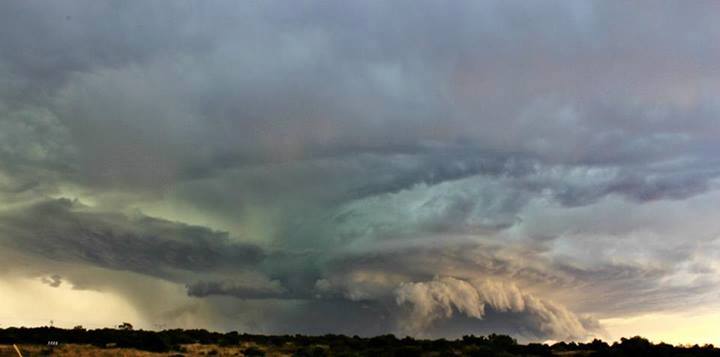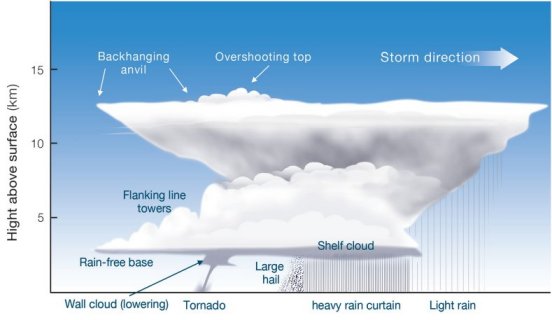Cooking up a storm – how thunderstorms form
10 December 2013
A thunderstorm is a form of turbulent weather accompanied by lightning and thunder. They are associated with a very tall cloud mass called a cumulonimbus cloud.
What causes thunderstorms?
Thunderstorms develop when warm, humid air near the ground receives an initial upward push from converging surface winds and rises rapidly in an unstable atmosphere. Thunderstorms can become severe when the atmosphere is particularly unstable and/or additional energy is drawn in from surrounding winds.

Thunderstorm in Esperance, Western Australia. Copyright: Jodie Midgley.
What is a severe thunderstorm?
While we experience many thunderstorms in Australia, more intense thunderstorms are referred to as severe thunderstorms. Severe thunderstorms can cause significant damage by wind gusts, large hail, tornadoes or flash flooding.
Thunderstorms which produce any of the following events are classified as severe in Australia:
- hail of 2 cm diameter or more
- wind gusts of 90 km/h or more
- tornadoes
- heavy rainfall that could cause flash flooding
Ingredients of a thunderstorm
The atmosphere needs 3 main ingredients to produce a thunderstorm.
- Moisture—sometimes indicated by low clouds or haziness in the morning or many cumulus clouds later (as shown in the image below)
- Atmospheric instability to make the atmosphere more buoyant
- A lifting mechanism such as heating or the approach of a front or low pressure trough.

A field of small cumulus clouds prior to strong convective development over the Apollo Bay coastline, Victoria. Copyright: Eleanor Joan Tralaggan.
Parts of a thunderstorm
Every thunderstorm cloud has several features, shown in the diagrams below.
- Core: the part of the cloud where sustained strong updraughts of relatively warm and moist air condense to produce rain, hail and/or snow.
- Flanking line: the dark flat cloud base that extends away from the core, usually to the west or north.
- Anvil: a flat, often fibrous cloud sheet, above and usually ahead of the core.
- Inflow-outflow region: the boundary between the warm air entering the thunderstorm and its cool outflow.

Diagram illustrating severe thunderstorm features.
Diagram showing a cross section of a tunderstorm.
Where and when do severe thunderstorms strike?
Severe thunderstorms can occur at any time of the year in Australia, although they are very rare during the dry winter months in the north. Most strike between September and March when the supply of solar energy is greatest. However severe winter storms linked to cold fronts are common in the south-west of Western Australia and south-east South Australia.



Comment. Tell us what you think of this article.
Share. Tell others.